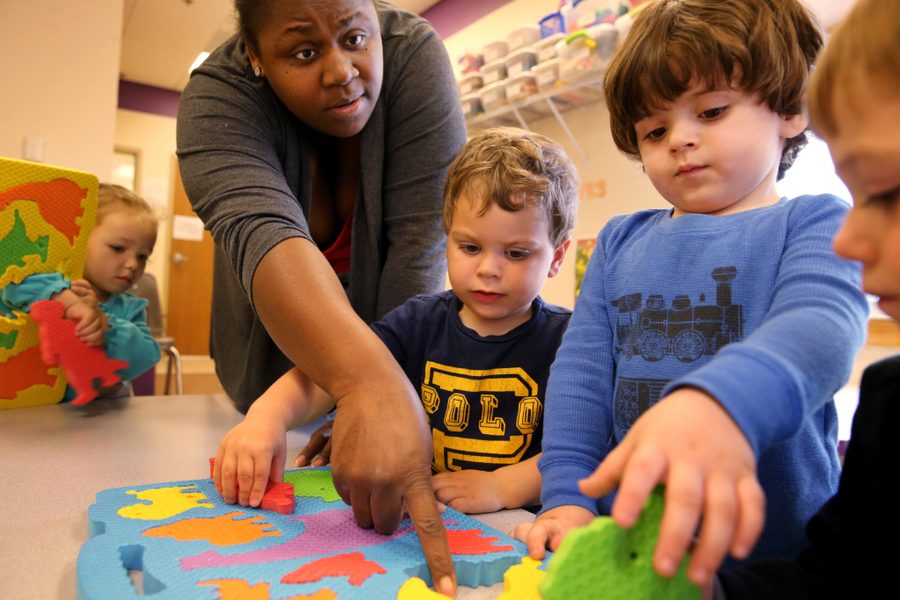Child Care Workers Are Now a Mighty Force With a Huge New Union. It Only Took 17 Years.
Hamilton Nolan

A 17-year organizing campaign in California culminated this week in the successful unionization of 45,000 child care providers — the largest single union election America has seen in years. The campaign is a tangible achievement that brings together union power, political might, and social justice battles for racial and gender equality. Now, the hard part begins.
Child Care Providers United (CCPU), the umbrella group now representing workers across the state, is a joint project of several powerful SEIU and AFSCME locals in California. Those unions divided up the state by counties, and workers will be members of either SEIU or AFSCME depending on where they live, as well as being members of CCPU.
The stage for this week’s vote was set last fall, when California governor Gavin Newsom signed into law legislation that granted bargaining rights to child care providers, who had previously been legally ineligible for unionization. Getting the law changed took 16 years, during which time it made it to the governor’s desk twice, but was vetoed — once by Arnold Schwarzenegger, and again by Jerry Brown. In the months since Newsom signed the bill, the unions used the networks they had already created over the past two decades to administer the election. The vote, announced yesterday, was 97% in favor of the new union.
The road to winning the union was so long that it has seen multiple generations participate. Miren Algorri, a child care provider in San Diego, first became involved because her mother, who was in the same line of work, was active in the campaign from the very beginning. “She would go to meetings, and I would stay behind and take care of the children,” Algorri said. When her mother retired, she carried on — and lasted long enough to see her years of work pay off.
“It’s taken so long because the work that we do has always been minimized and infantilized,” Algorri said. “It’s because of the way society has seen child care from the very beginning of this country. The foundation was women of color caring for children. Doing work that, according to society, doesn’t require any skills.” The industry’s workforce in California is mostly women and about three-fourths people of color, according to the union.
Though the bulk of the 17-year campaign was focused on the primary goal of winning the legal right to collective bargaining, it also allowed a disparate statewide workforce to organize and fight for their own issues along the way. (The group had a large pool of dues-paying members even before the law was changed last year.) Although CCPU is brand new as a formal union, it already boasts thousands of members who are seasoned in labor organizing and political lobbying. That will likely come in handy as the group moves into its next phase: negotiating a contract with the state of California.
Providers who care for low-income children receive a set reimbursement rate from the state, and raising that figure is one of the top priorities in bargaining. Algorri said that in San Diego, she is paid $234 a week to care for an infant for up to 60 hours, and she is obligated to pay her assistants at least the local minimum wage of $13 per hour. That means she can often end up making less than minimum wage herself. She also wants a good healthcare plan, which almost all child care providers lack, as well as some way to save for retirement. “I have been working for 23 years. I have not earned one day of sick leave, and pretty much I don’t have a retirement plan,” she said. “We don’t want a red carpet. Just a decent living.”
Max Arias, the executive director of SEIU 99, one of the unions behind CCPU, said that the coronavirus pandemic, which struck while the union election was still underway, offered a chance for child care workers to organize to fend off any budget cuts, and to fight to get proper personal protective equipment (PPE). The pandemic has also highlighted the fact that these child care workers are absolutely vital to not only reopening schools, but keeping the entire economy running. Providers have continued to work throughout the pandemic in large part to provide care to the children of other essential workers, so that they can work as well. If child care work becomes economically untenable, the entire system could grind to a halt.
“Providers will play an outsize role [in school reopening]. A lot of parents are going to need support,” said Arias, whose union already represents thousands of school employees. He ticked off the immediate needs: funding for livable wages and healthcare for child care providers, and for adequate PPE to keep them safe and operational. “If we’re going to reopen the economy, the status quo funding that exists is not enough,” he said, adding that California needs a tax on billionaires, something that he believes the public would support at this moment. Until then, the child care providers will fight for themselves. They are already building a bargaining team, and Arias said that he hopes to have a contract in place within a year, given the urgency of the situation.
The sheer number of CCPU members, and their established connections with the highest level of state officials and national unions, means that they will be a force in California politics for years to come. They also represent one of the most meaningful instances of material progress in labor power for low-wage workers of color in years.
For the moment, they have earned the right to simply savor their victory. Miren Algorri brings up a taco shop in her area that has a sign reading, “Patience is the essence of good Mexican cuisine.”
“It’s the same with us,” she said. “We’ve cultivated that quality over the years.”
Hamilton Nolan is a labor writer for In These Times. He has spent the past decade writing about labor and politics for Gawker, Splinter, The Guardian, and elsewhere. More of his work is on Substack.








